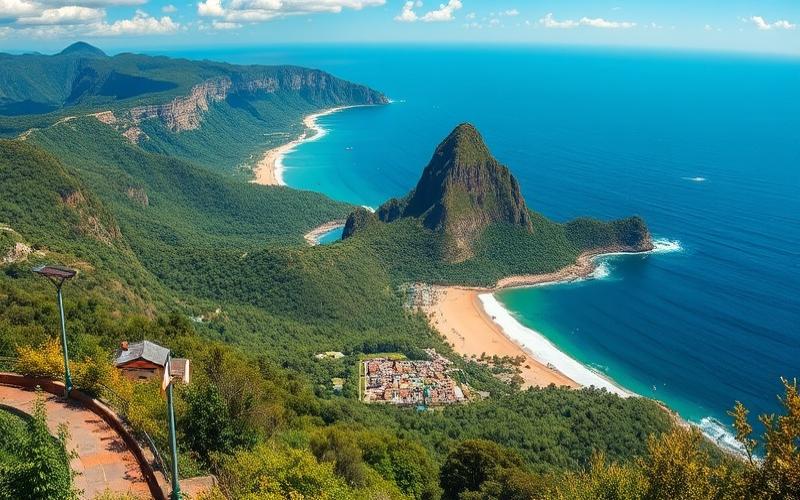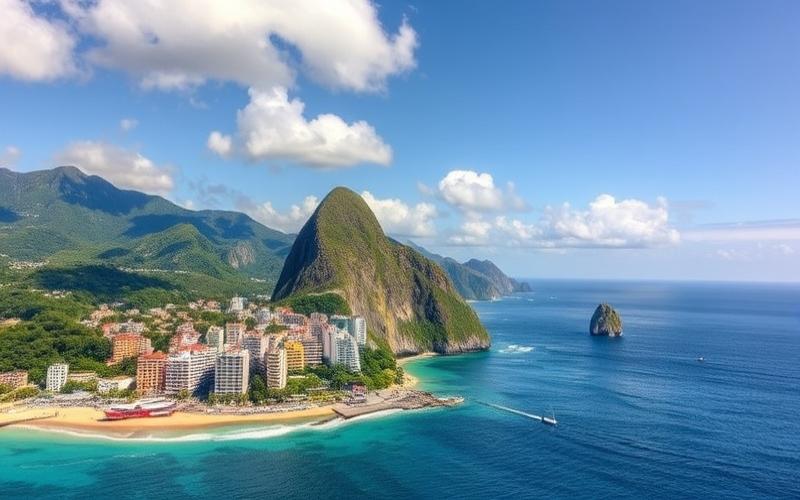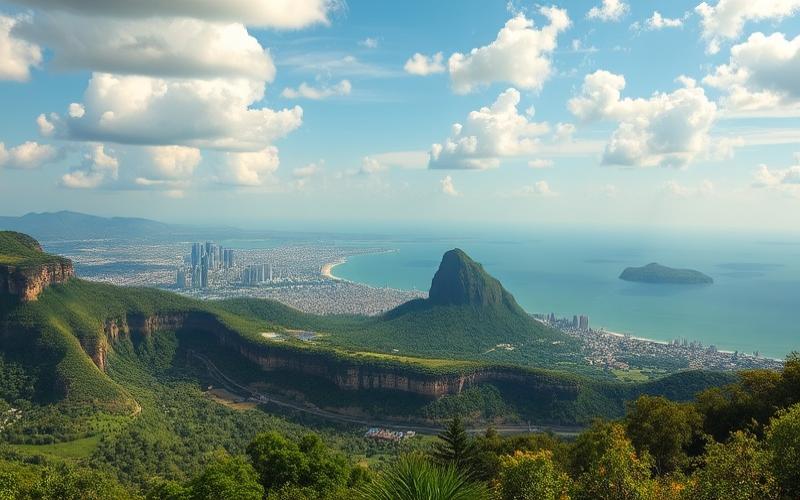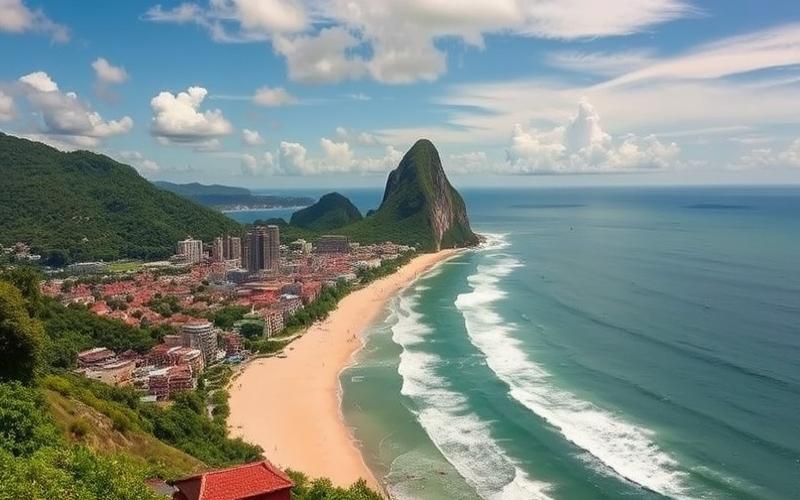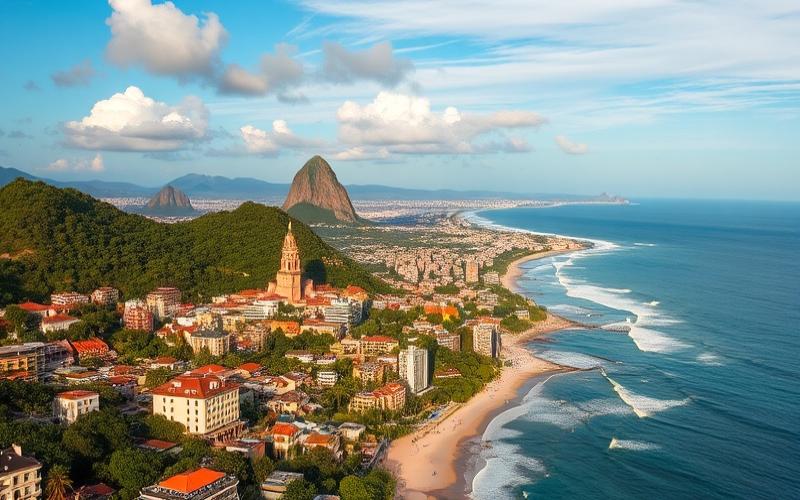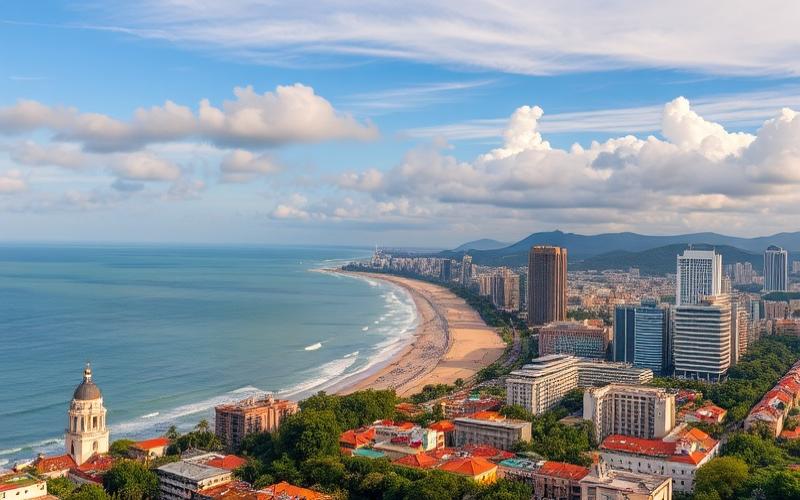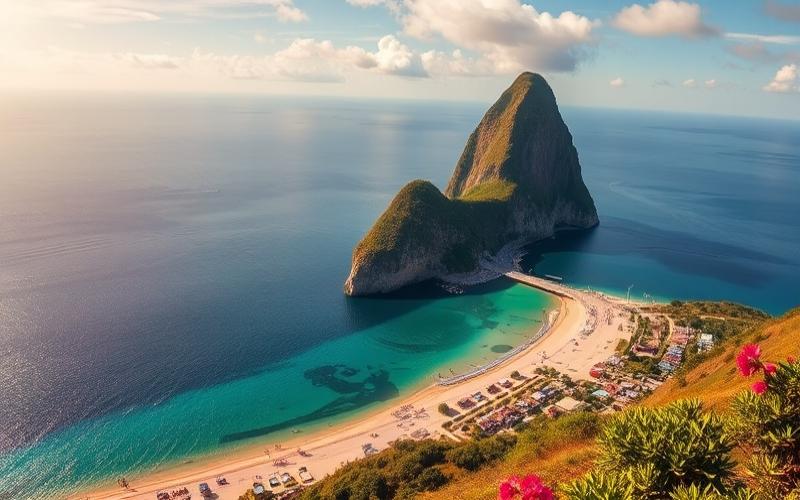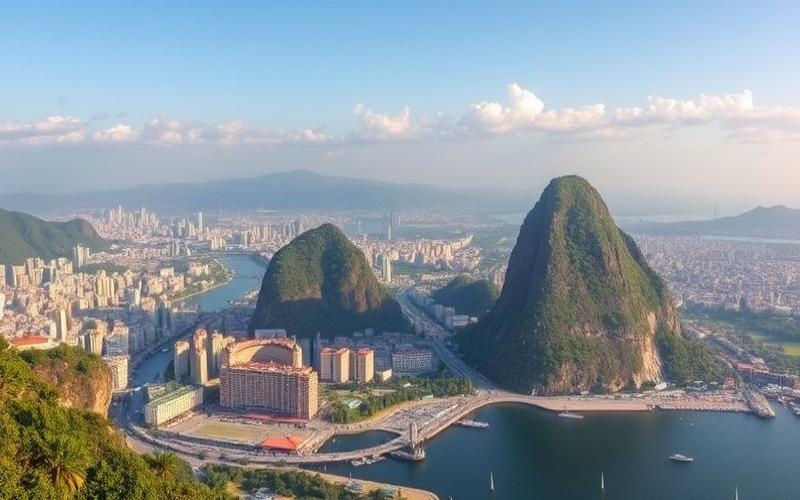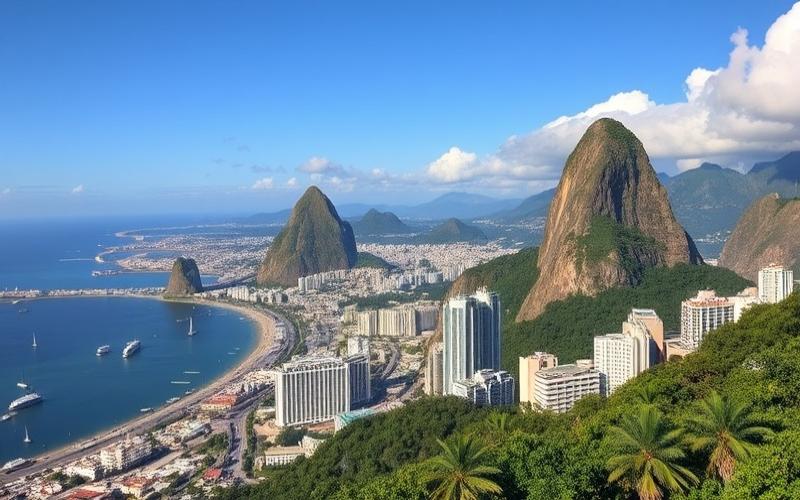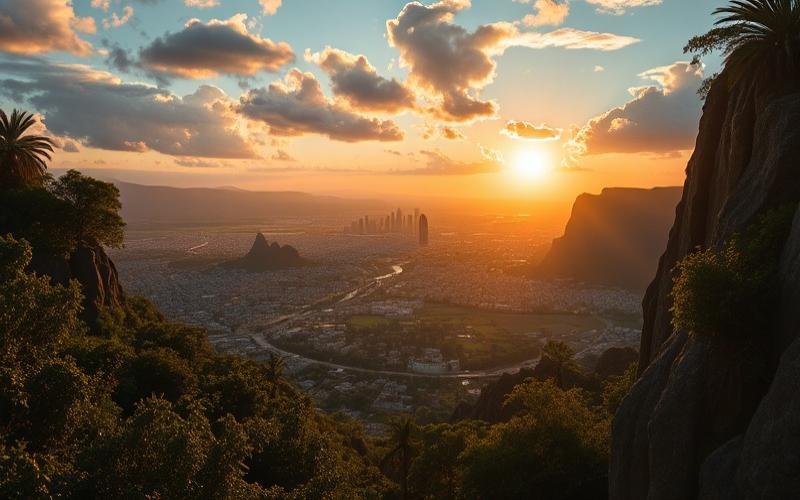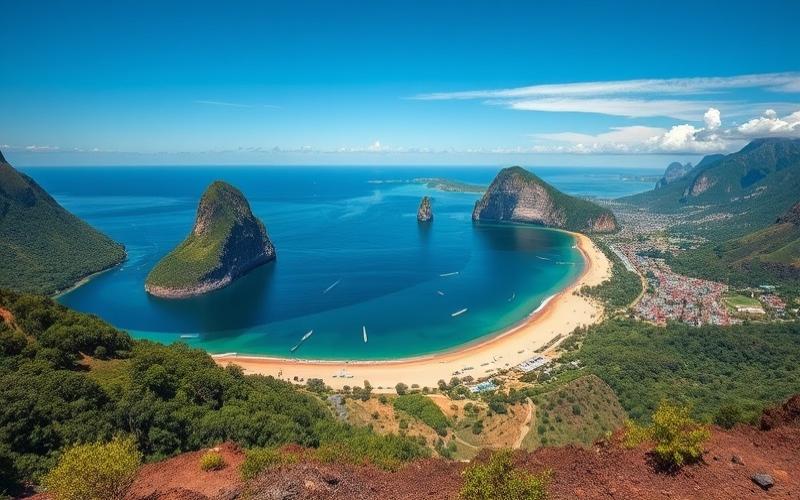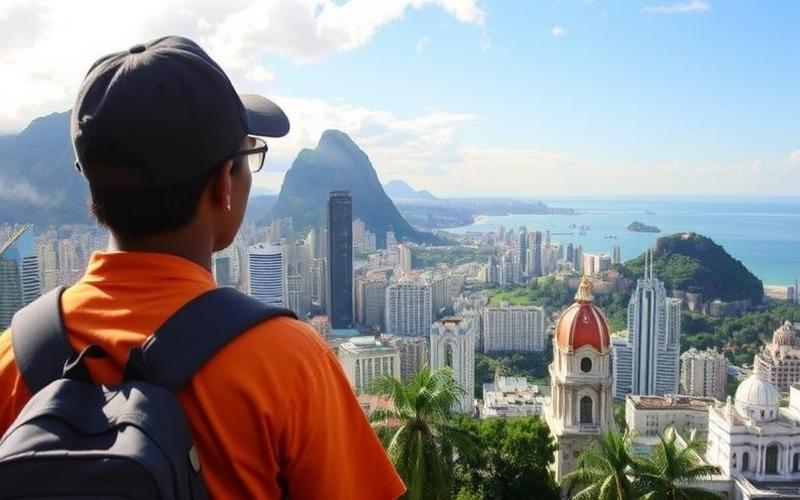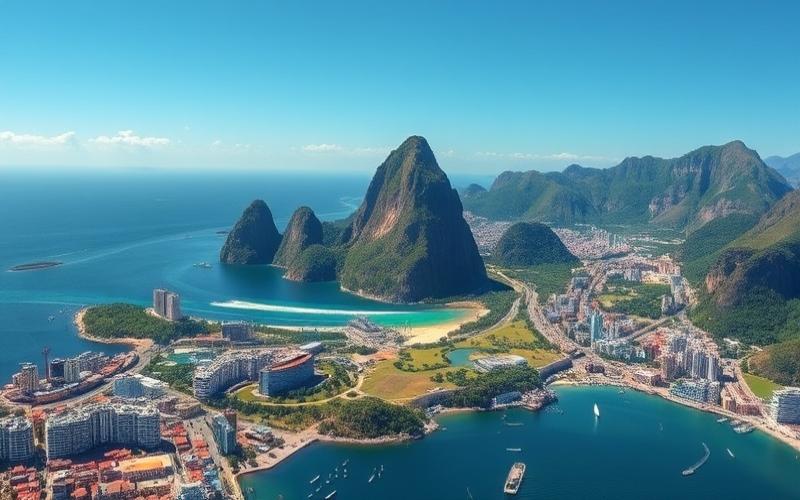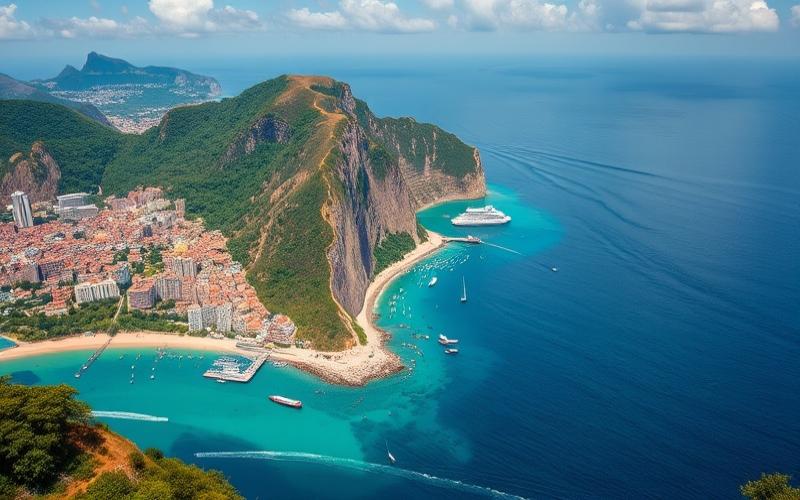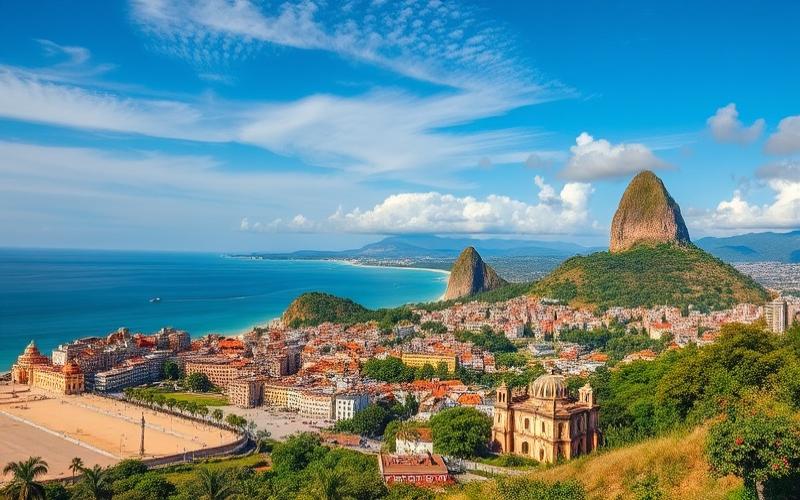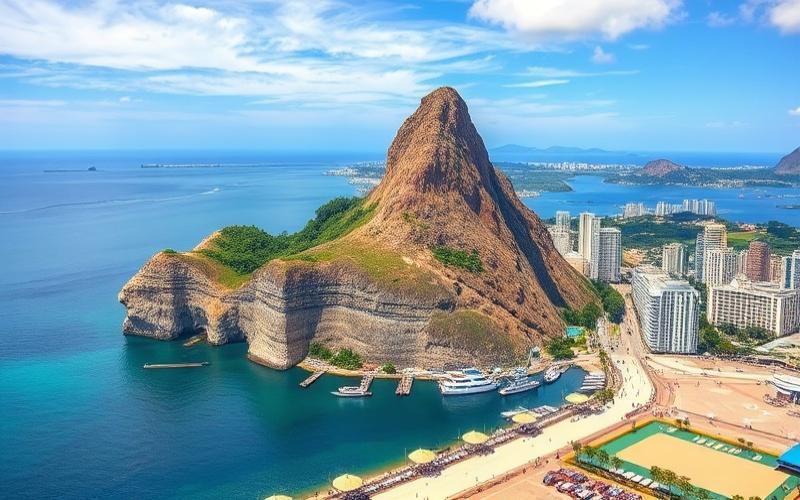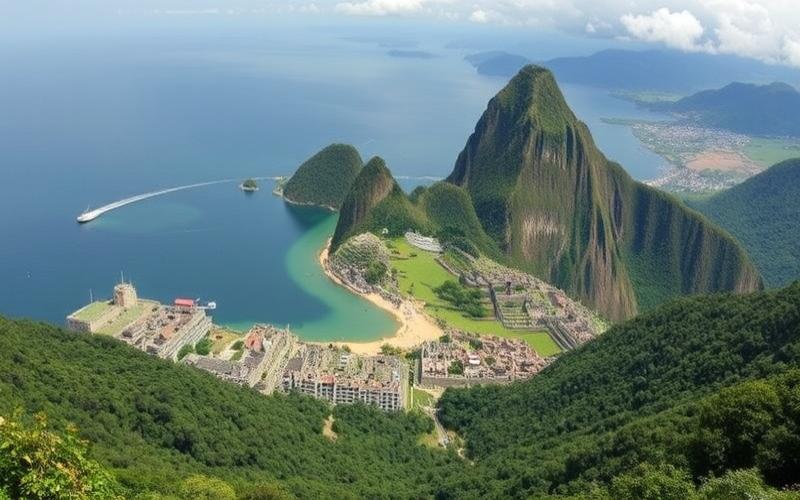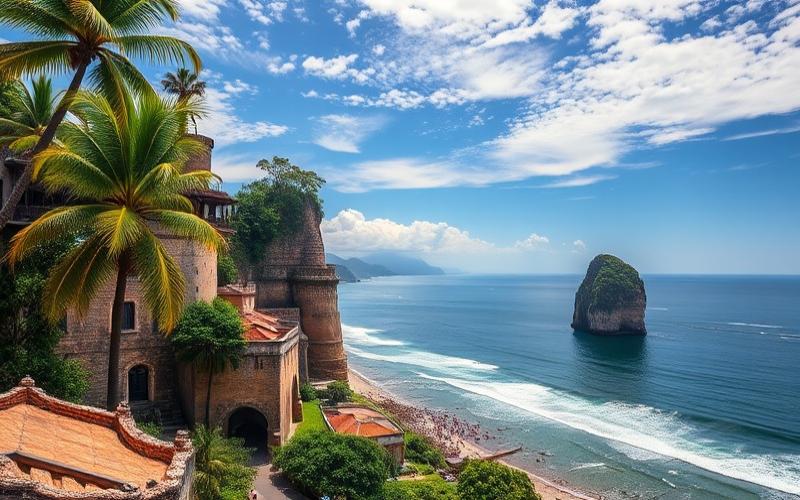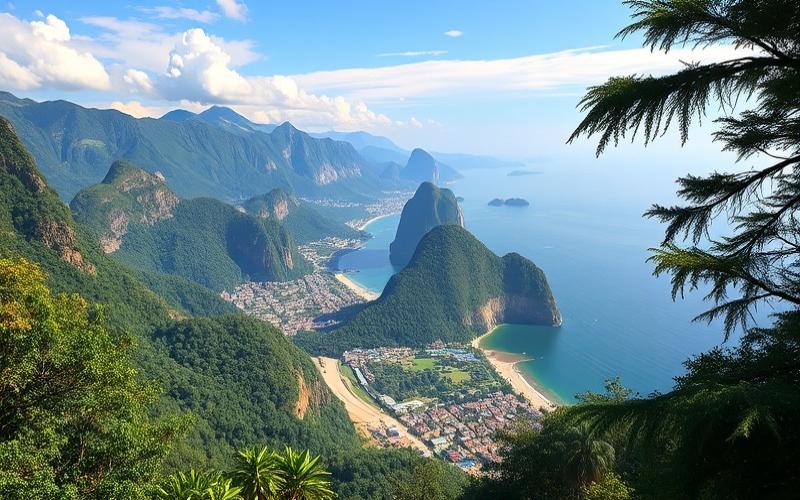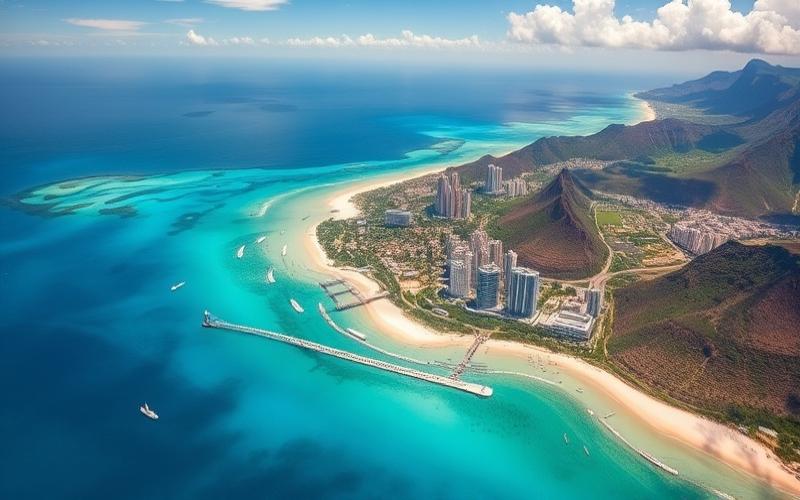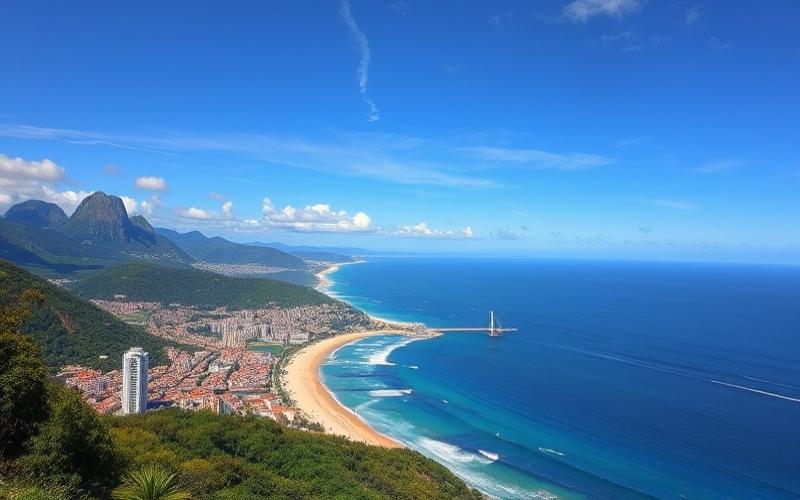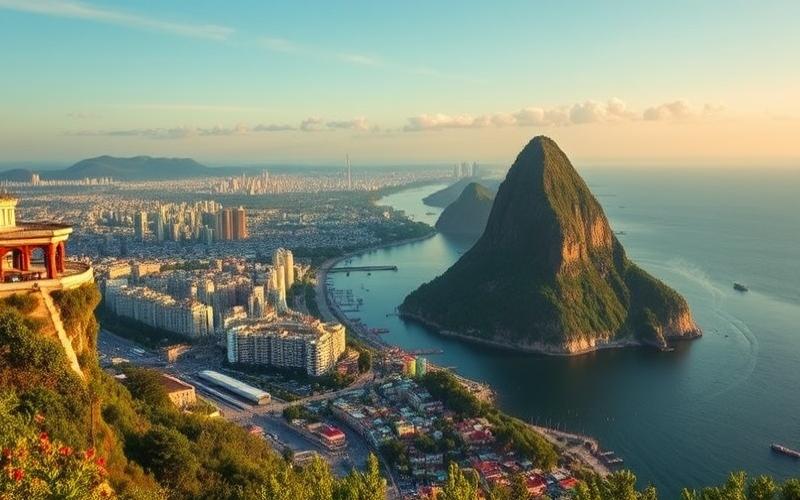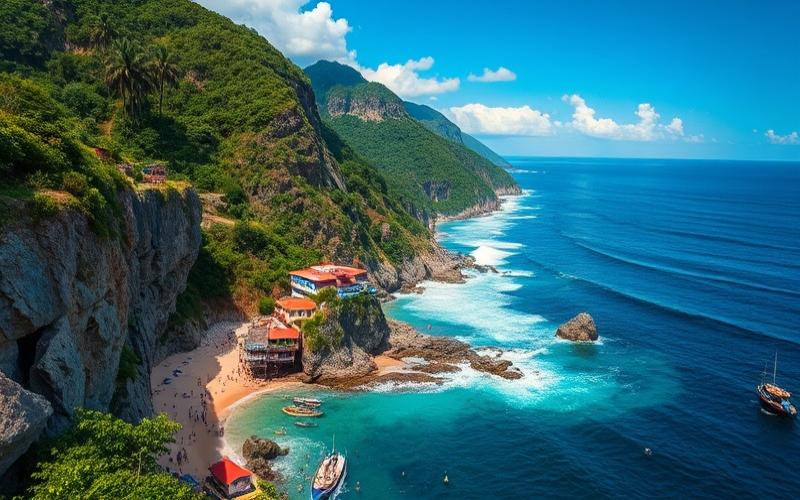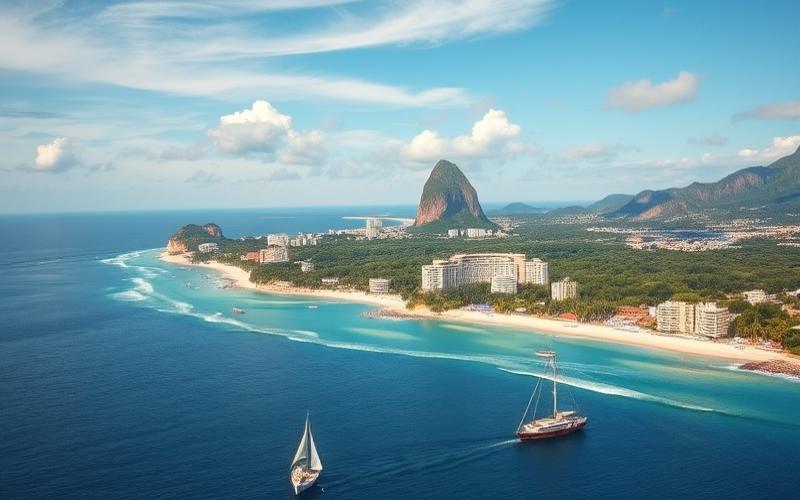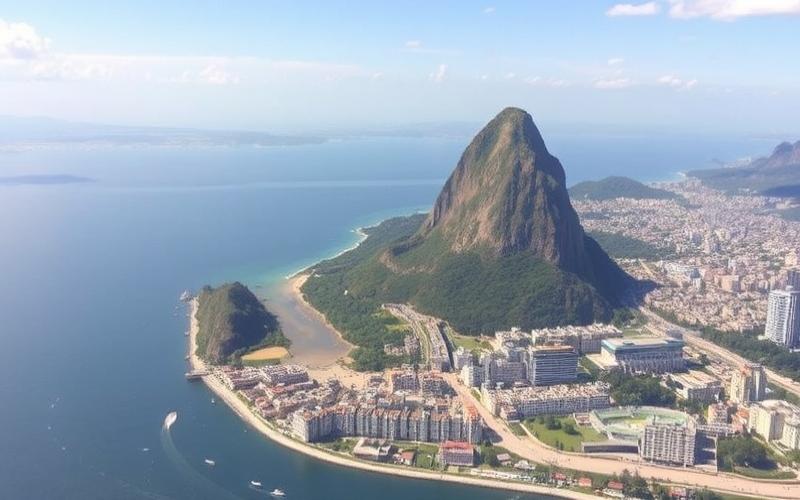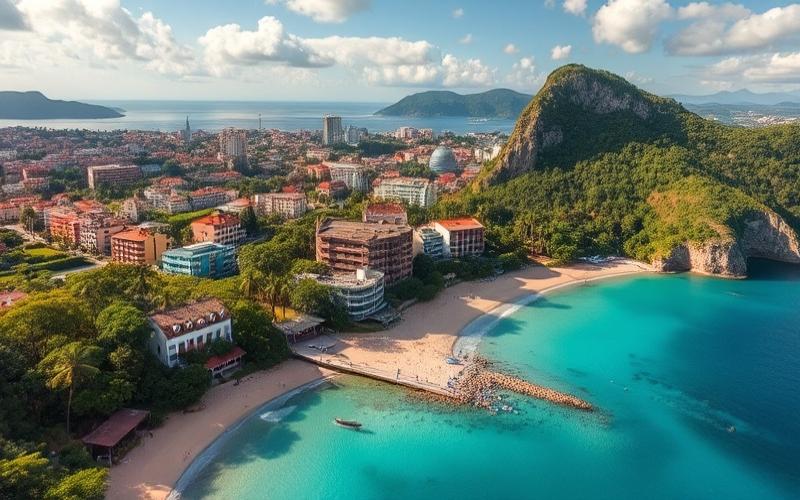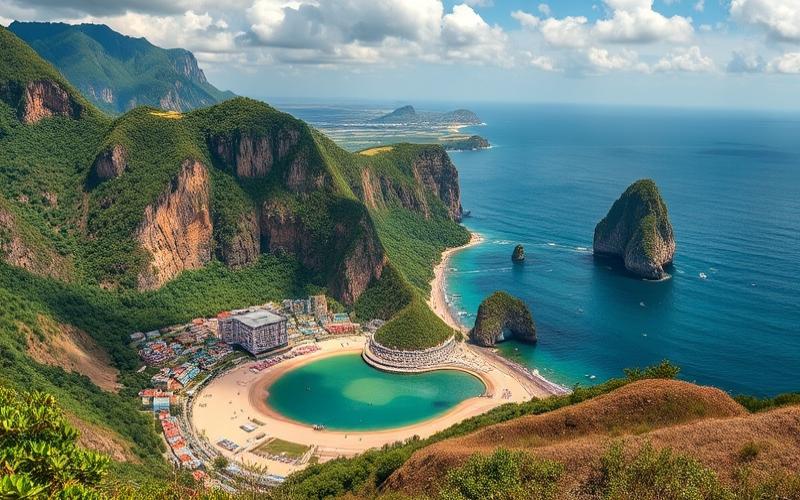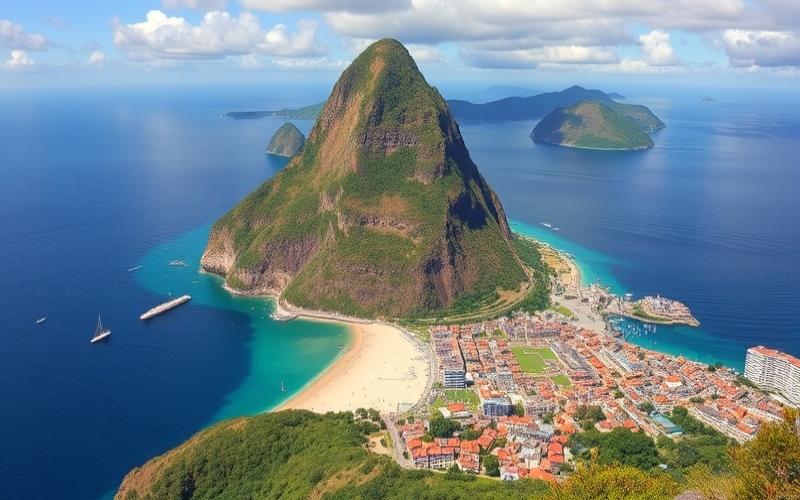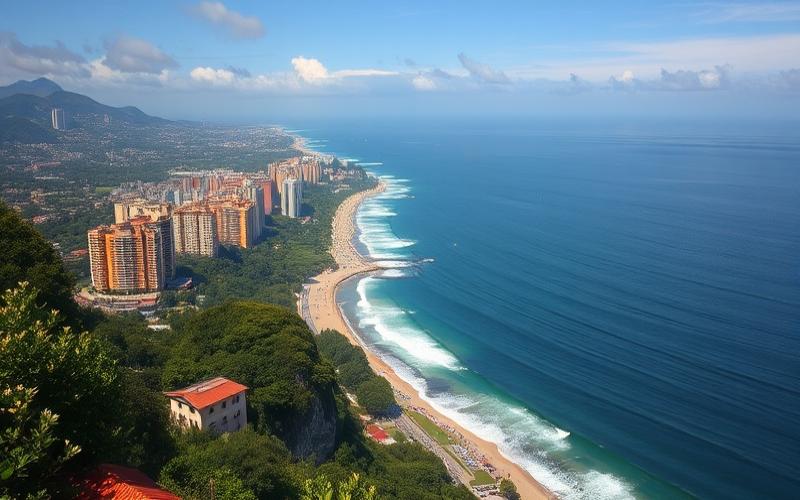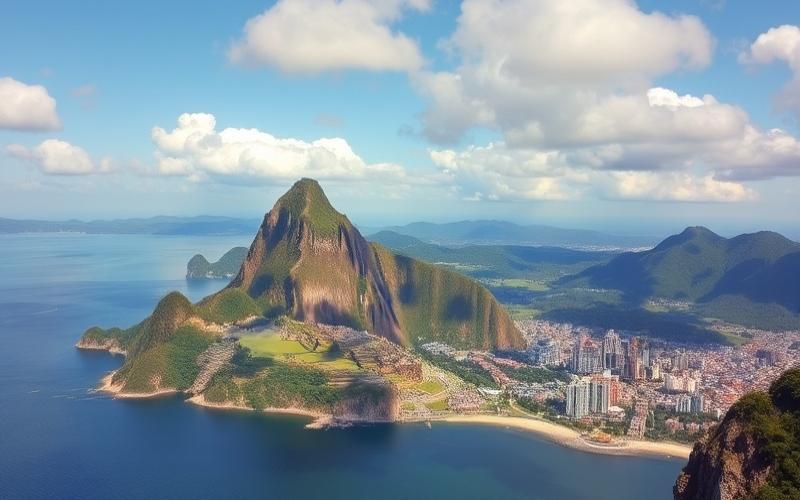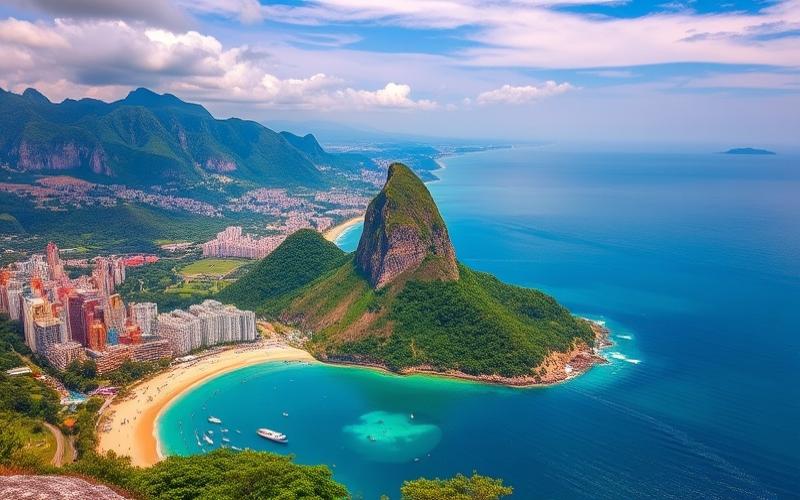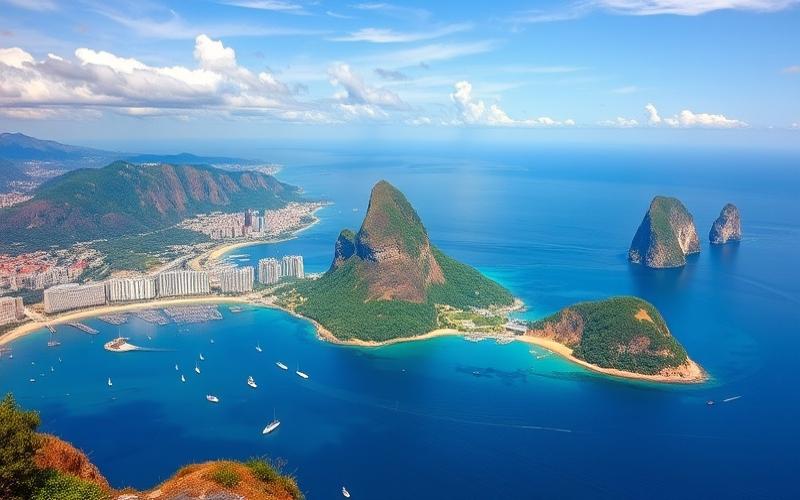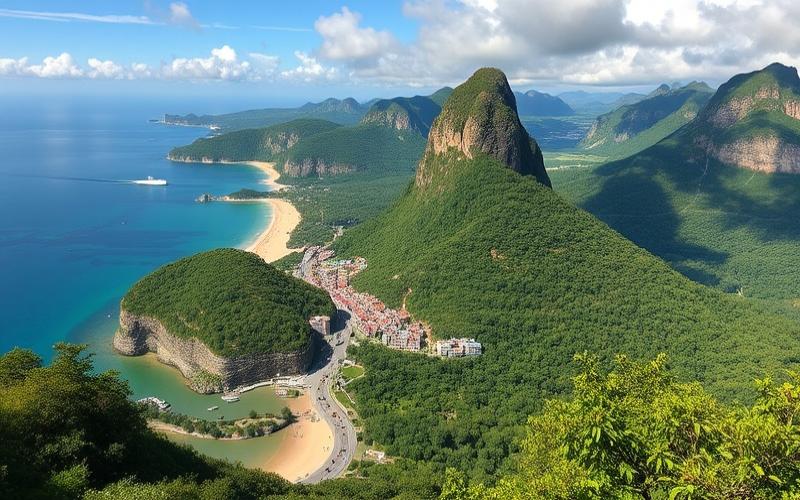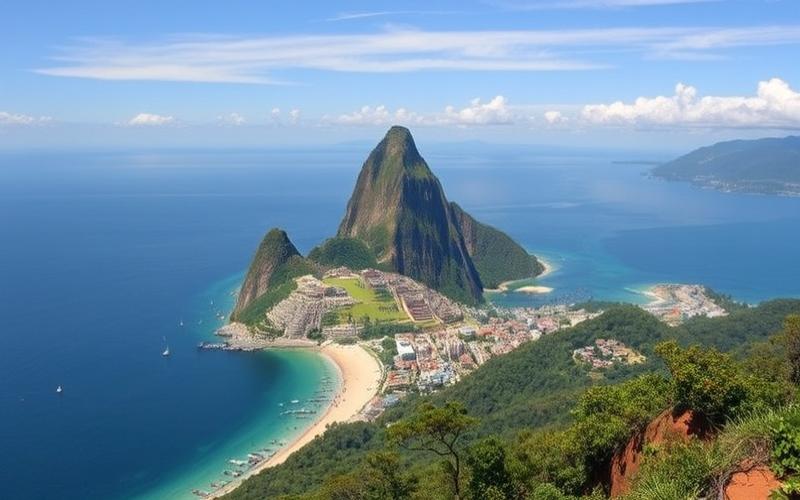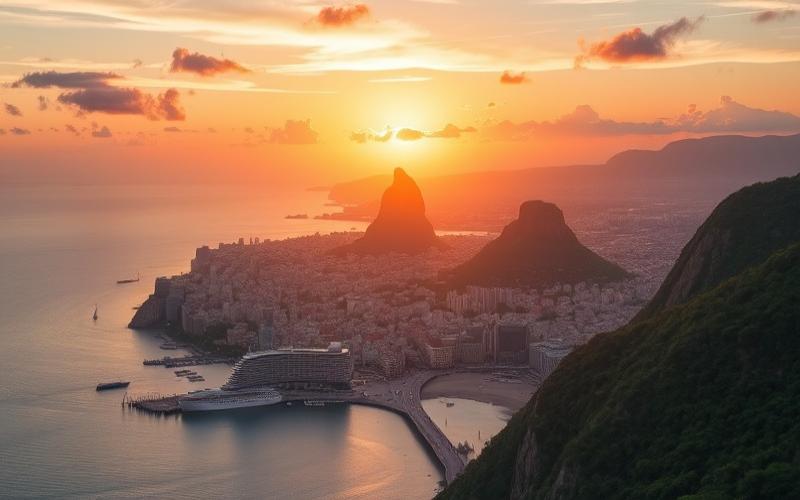
 Published on and written by Cyril Jarnias
Published on and written by Cyril Jarnias
Brazil, a vast and vibrant territory, offers a public transportation network as diverse as its cultural and geographical landscape. For travelers and residents alike, understanding and navigating Rio’s colorful buses, São Paulo’s subways, or Manaus’ boats is essential to fully enjoy this country of fascinating contrasts.
With numerous recent improvements aimed at reducing urban traffic and modernizing infrastructure, the challenge for every user is knowing how to leverage these systems for efficient travel. This practical guide aims to shed light on the nuances and tips for mastering Brazilian public transportation, taking into account regional specificities and the latest adopted technologies.
Popular Transportation Modes in Brazil
The most commonly used transportation modes in Brazil are buses, subways, and commuter trains.
| Transportation Mode | Operation and Coverage Areas | Average Cost (2024) | Accessibility and Frequency | Usage and Efficiency |
| Bus | Extensive network covering nearly all cities and neighborhoods, including suburban and rural areas. Articulated system in some major cities (BRT in Rio). | 4 to 5 BRL per trip | Good accessibility, frequent stops, service generally from 4 AM to 11 PM. BRT: dedicated lanes, high frequency (3-10 min during peak hours). | 86% market share of public transport. Often crowded during peak hours, punctuality varies with traffic. |
| Subway | Mainly present in São Paulo, Rio de Janeiro, Belo Horizonte, Brasília, Recife, and Porto Alegre. More limited network but fast and modern. | 5 to 8 BRL per trip | Accessibility for people with reduced mobility, air conditioning. High frequency (2-5 min during peak hours). Extended hours (4:40 AM to midnight in São Paulo). | São Paulo Metro: largest in the country, 75.5 km, 65 stations. Valued for its speed, punctuality, and safety. |
| Commuter Trains | Primarily in major metropolitan areas (CPTM in São Paulo, SuperVia in Rio). Connect downtown with distant suburbs. | 4.60 to 5 BRL per trip | Variable accessibility, often packed during peak hours. Good frequency on main lines (5-10 min). | CPTM (SP): 2 million passengers/day, 260 km, 90 stations. SuperVia (Rio): 8 lines. Variable reliability, aging infrastructure. |
Operational Details
- Bus: Payment is made on board (cash or rechargeable transport card like Riocard in Rio). BRT buses have enclosed stations and level boarding. Numerous regular lines but sometimes confusing for tourists.
- Subway: Tickets purchased at stations, rechargeable card or via app (e.g., MetrôRio app). Lines serve main urban routes and some connections with trains and buses.
- Commuter Trains: Access with single tickets or rechargeable cards. Connections with subways and buses at major hubs (e.g., Estação da Luz in São Paulo). Mainly used by daily commuters.
Accessibility
- Recent subways and BRT are generally adapted for people with reduced mobility (elevators, ramps, visual and audio announcements).
- Older commuter trains and some regular buses may present access difficulties.
- Major stations in large cities have assistance services and multilingual signage.
Recent Statistics
- Approximately 86% of public transport trips nationwide are by bus.
- São Paulo Metro: over 4 million passengers per day pre-pandemic.
- CPTM (SP commuter trains): over 2 million passengers/day.
- Rio de Janeiro (metro + trains + BRT): millions of daily users, but buses remain the majority.
Benefits for Residents and Tourists
- Bus: Wide territorial coverage, affordable fares, numerous routes.
- Subway: Speed, reliability, safety, air conditioning, clear passenger information.
- Commuter Trains: Ideal for accessing distant suburbs, avoids urban traffic jams.
Challenges Faced
- Overcrowding during peak hours, frequent delays (especially buses and commuter trains).
- Variable safety in certain neighborhoods or remote stations.
- Network complexity for newcomers, lack of English information outside major cities.
- Uneven accessibility for people with reduced mobility.
- Use integrated transport cards (Riocard in Rio, Bilhete Único in São Paulo) to facilitate transfers and avoid buying tickets for each trip.
- Utilize mobile apps (Moovit, MetrôRio App, Google Maps) to plan routes and check real-time schedules.
- Prefer subway or BRT for fast and safe trips, especially during peak hours.
- Avoid traveling alone late at night in less frequented areas.
- For tourists, prioritize main lines and seek advice from hotel reception or tourist offices for purchasing cards and understanding the network.
Key takeaway: Buses dominate the urban landscape, but subways and trains offer speed and comfort in large cities. To optimize your travel, combine modes, plan ahead, and use integrated transport cards.
Good to know:
Buses in Brazil are often crowded but frequent; it’s advisable to download local apps to track their arrival in real-time and avoid peak hours. The subway, although limited to a few major cities like São Paulo and Rio de Janeiro, is fast and reliable, while commuter trains, less expensive, offer a beneficial alternative despite frequent delays.
Cost and Tips for Saving on Public Transportation
Public Transportation Fares in Brazil:
Public transport prices vary by major city:
| City | Single Ticket | Monthly Pass (average) |
| São Paulo | 4.40 to 5 BRL | 230 to 300 BRL |
| Rio de Janeiro | 4 to 7 BRL | 220 to 350 BRL |
| Brasília | 5 to 6 BRL | 210 to 300 BRL |
The average single ticket price ranges from $0.80 to $1.10 (approximately 4 to 7 BRL depending on the city and transport mode).
The average monthly pass is around $37 (228 BRL), with a range of $22 to $57 depending on the city.
Pass and Subscription Options:
- Rechargeable Cards: Each city offers its own card (e.g., Bilhete Único in São Paulo, Riocard in Rio). These cards allow loading tickets or passes.
- Monthly Subscriptions: Valid for unlimited trips within the month on the relevant network (bus, subway, tram). Price: between 135 BRL and 350 BRL depending on the city and access level chosen (single network or comprehensive).
- Integrated Passes: Some subscriptions allow combining bus + subway + tram, often at a discounted rate.
- Validity: Most subscriptions are valid for 30 rolling days from first use.
Off-Peak Hours and Fare Reductions:
- In some cities, reduced fares apply during off-peak hours (generally between 9 AM and 4 PM and after 8 PM). These discounts can be up to 20% off the ticket price.
- Monthly passes help amortize the cost, especially for frequent users, even without considering schedules.
- Students, seniors (usually from age 65), and sometimes people with reduced mobility benefit from significant discounts or free travel upon presentation of proof.
Tips for Saving on Transportation:
- Choose the appropriate pass for your usage frequency (weekly, monthly, or credit top-up).
- Use trip planning apps (e.g., Moovit, Google Maps) to avoid unnecessary wait times, optimize transfers, and identify the most economical routes.
- Stay informed about seasonal promotions or fare changes via official websites or local transport company apps.
- Prefer off-peak hours when possible to take advantage of reduced fares.
- For short stays, opt for rechargeable cards rather than purchasing single tickets.
Local Initiatives and Subsidies:
- Many Brazilian cities have implemented transport subsidy programs for students (half-price or free) and seniors (free from a certain age).
- Some municipalities offer incentives for using public transport during major events or high pollution periods (e.g., free travel on certain lines, increased service).
- Major cities are investing in developing integrated networks (bus, subway, tram) to make travel more attractive and affordable.
Key takeaway: using a suitable pass, traveling outside peak hours, and staying informed about discounts can significantly reduce your transportation budget in Brazil.
Good to know:
In São Paulo, a monthly pass for buses and subways costs about 220 BRL, while discounts are often available during off-peak hours; use apps like Moovit to plan your trips and stay alerted to local promotions.
Practical Tips for Efficient Travel
Practical Tips for Efficient Public Transportation Travel in Brazil:
Buses
- Urban and intercity buses cover almost all cities and regions of Brazil.
- Prefer main lines and “Frescão” buses (air-conditioned, comfortable, connecting business districts and tourist areas).
- For long-distance trips, choose reputable companies like Cometa, Expresso do Sul, or Viação 1001.
- Buy your tickets at the bus station or online via ClickBus or Busbud.
- Bring a sweater for long trips: air conditioning is often very strong.
- Avoid buses at night and during peak hours (6:30-9 AM and 5-7 PM) for greater safety and comfort.
Subways and Urban Trains
- Present in major cities (Rio, São Paulo, Brasília, Belo Horizonte).
- Fast, reliable, air-conditioned, but very crowded during peak hours (morning and evening).
- Prefer travel outside these slots to avoid crowds.
- Signs are generally clear:
- « Entrada » = entrance
- « Saída » = exit
- « Bilheteria » = ticket office
- « Embarque » = boarding
- « Desembarque » = disembarking
- Lines and directions are well identified by colors and codes.
Useful Apps and Websites for Planning Your Trips
- Moovit and Google Maps: real-time route planning, schedules, disruptions, alternatives.
- ClickBus and Busbud: purchase long-distance bus tickets, price and schedule comparison.
- CPTM (São Paulo trains) and MetroRio (Rio subway): schedules, alerts, network info.
- 99 Taxi, Uber, InDrive: for secure taxi or ride-hailing trips.
Payment Options
- Rechargeable Transport Cards:
- « Bilhete Único » in São Paulo
- « RioCard » in Rio de Janeiro
- Rechargeable at stations, kiosks, supermarkets, or via mobile apps.
- Contactless payment increasingly common (bank cards, smartphone).
- Single tickets also available at stations but less advantageous.
Personal Safety
- Stay vigilant: keep personal belongings close, especially in crowded buses and stations.
- Avoid displaying valuables (phones, jewelry, cameras).
- Prefer public transportation during the day.
- If you must travel late, prefer official taxis or ride-hailing via app.
Summary Table of Public Transportation in Brazil:
| Mode | Advantages | Disadvantages | Payment | Useful Apps/Info |
|---|---|---|---|---|
| Bus | Economical, dense network, many options | Often crowded, strong AC, irregularity | Card, cash, app | Moovit, ClickBus, Busbud |
| Subway/Train | Fast, reliable, air-conditioned, secure | Very crowded during peak hours | Rechargeable card | MetroRio, CPTM, Moovit |
| Taxi/Ride-hailing | Comfort, safety, flexible | More expensive, road traffic | Cash, card, app | Uber, 99, InDrive |
Examples of Common Signage:
- Entrada: entrance
- Saída: exit
- Bilheteria: ticket office
- Embarque: boarding
- Desembarque: disembarking
- Proibido Fumar: no smoking
- Assento Preferencial: priority seating
Key Takeaways:
Always check real-time schedules via recommended apps, prefer rechargeable transport cards for convenience, and follow safety guidelines for peaceful travel.
Good to know:
Use Moovit or Google Maps apps to plan your trips while avoiding peak hours, and prefer reloading a prepaid transport card, more convenient and secure than purchasing individual tickets.
Disclaimer: The information provided on this website is for informational purposes only and does not constitute financial, legal, or professional advice. We encourage you to consult qualified experts before making any investment, real estate, or expatriation decisions. Although we strive to maintain up-to-date and accurate information, we do not guarantee the completeness, accuracy, or timeliness of the proposed content. As investment and expatriation involve risks, we disclaim any liability for potential losses or damages arising from the use of this site. Your use of this site confirms your acceptance of these terms and your understanding of the associated risks.

